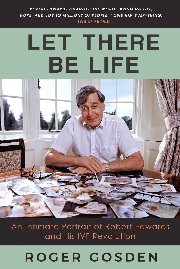Let There Be Life: An Intimate Portrait of Robert Edwards and his IVF Revolution

Roger Gosden
Jamestown Bookworks, £11.50
When I went to the Institute of Animal Genetics in 1955 to read a Diploma in Animal Genetics, nearly the first people I met were Bob Edwards and Ruth Fowler, who would become Bob’s wife the following year. I was therefore keen to read this biography of a man who started from humble origins but became such an enthusiastic and productive scientist and achieved so much of benefit for many others.
Bob’s early life was formative of his later career and interests. He was an egalitarian and embraced Labour politics to the extent of becoming a Councillor and unsuccessfully standing for Parliament. He enjoyed outdoor physical work as a contrast to his intense interest and involvement in his science and eventually owned a small farm on which he planted many trees. He treated people as equals and though keen to offer and test new ideas, he was equally ready to acknowledge when he was wrong and to debate exhaustively with others.
Professor Gosden sets out the story of Bob’s development of interest in human embryology in Edinburgh, London and Cambridge, of his connection to gynaecologist Patrick Steptoe in Oldham, with whom he was to form a lifelong partnership and of their eventual success in enabling the first IVF baby, Louise Brown to be born in the UK in 1977. Having achieved one success Bob and Patrick went on to improve procedures and to encourage many others all over the world to establish clinics for overcoming human infertility. Not surprisingly the subject of IVF raised many ethical issues with which Bob engaged and which are explored here.
Bob and Patrick’s work won them many accolades and for Bob the honour of a Nobel prize for Physiology and Medicine in 2010. Sadly Patrick had died previously.
This is an excellent account of a scientific life demonstrating that it is possible by vision, determination and application to rise from sparse beginnings to reach the highest scientific peaks and simultaneously to benefit many millions of people. It is a very inspiring read and an excellent example of how to be a respected and productive scientist whatever ones beginnings. The book has a collection of pictures, a list of further reading and an index.
John C Bowman FRSB


